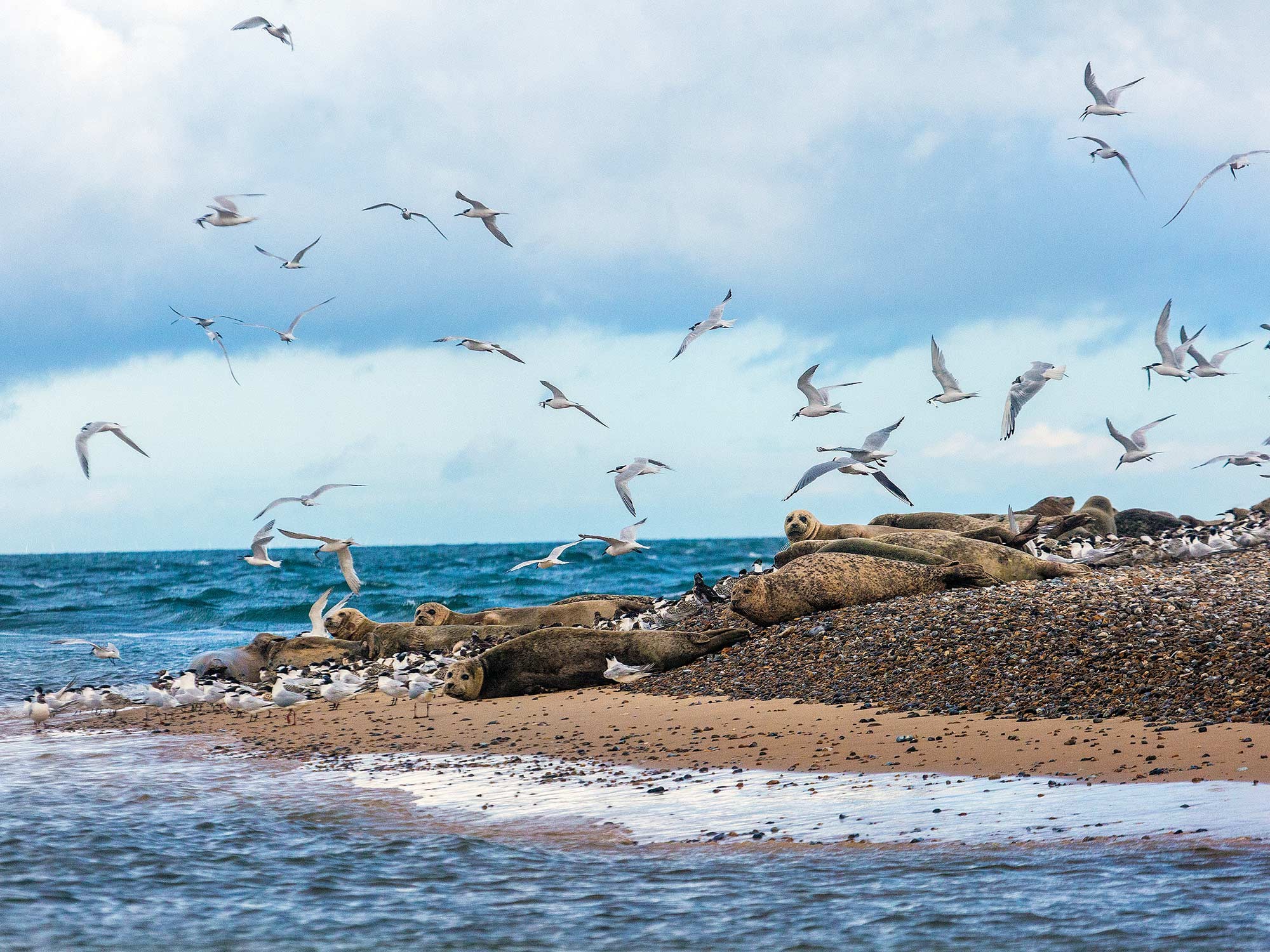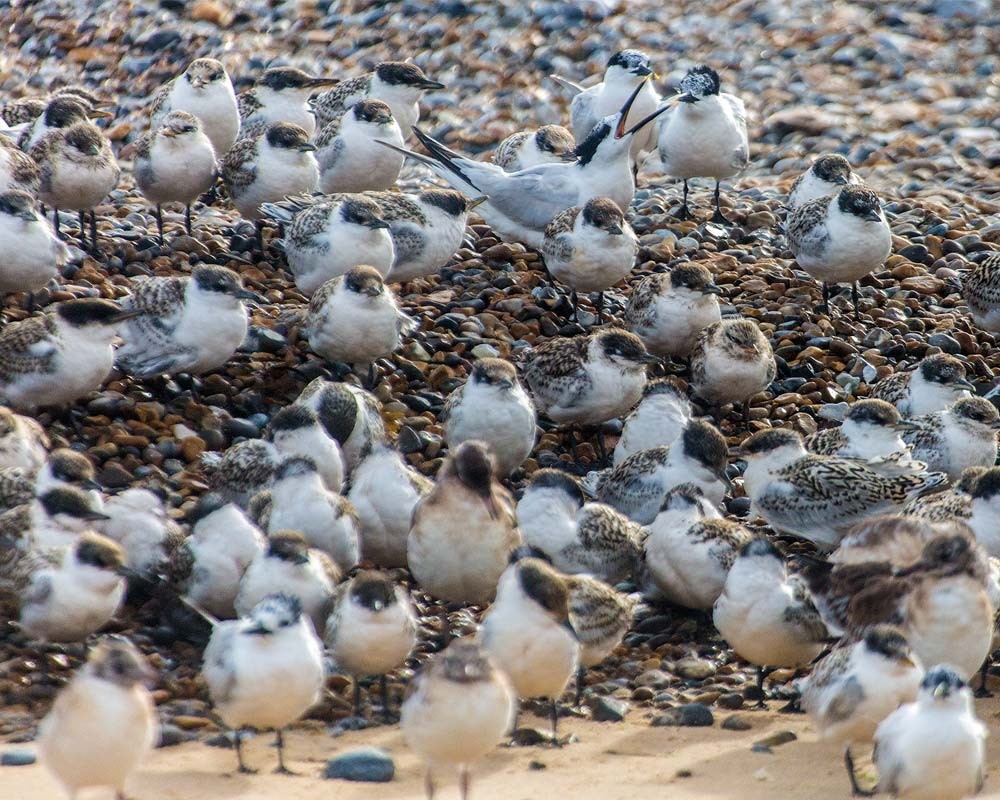
Spectacular wildlife and stunning views
Lead Ranger for the Norfolk Coast and Broads Team at Blakeney Natural Nature Reserve Stephen Prowse talks about one of North Norfolk’s most iconic natural landmarks and its wildlife…
Many years before the National Trust acquired Blakeney Point, it had already been recognised as a special place for both its flora and fauna, in particular the tern colonies – but also as the haunt of rare breeding and migrant birds. It became a popular haunt of ‘gentleman gunners’ who shot the rarities and collected their eggs for display cabinets, whilst the locals took them for food.
In response to this uncontrolled slaughter, in 1901 the Blakeney and Cley Wild Bird Protection Society created a bird sanctuary and appointed the first ‘watcher’ or warden.
In 1910, the owner of Blakeney Point, the 6th Baron Calthorpe, leased the land to University College London (UCL), who also purchased the Old Lifeboat House. When the baron died later that year, Blakeney Point was put up for sale.
In 1912, a public appeal initiated by Charles Rothschild and organised by UCL’s Professor Oliver and Dr Sidney Long enabled the purchase of Blakeney Point, which was then donated to the National Trust.
UCL established a research centre at the Old Lifeboat House, where Oliver and his colleagues pioneered the scientific study of Blakeney Point. The college still has strong links to the Point with groups of students annually spending a week studying aspects of the Point’s ecology.
In the reserve’s early years, the distinctive blue lifeboat house was still used to house the Blakeney Lifeboat service, but by 1922 it became too difficult to launch the lifeboat due to the shifting shingle and sand dunes in front of the building.



The National Trust then acquired the building to use as accommodation for their warden to live on the Point. So, for over 90 years, apart for brief interludes during the two world wars, it has housed the Blakeney Point watchers, then wardens and now the ranger team – and provided a welcome to 1,000s of visitors to the Point.
In recognition of its international importance for its rare habitats and breeding seabirds, the Point was designated as a Site of Special Scientific Interest (SSSI) in 1954, and incorporated into the 7,700-hectare (19,000-acre) North Norfolk Coast SSSI in 1986. The larger area is now additionally protected through Natura 2000, Special Protection Area (SPA) and Ramsar listings, IUCN category IV (habitat/species management area) and is part of the Norfolk Coast Area of Outstanding Natural Beauty. The Point became a National Nature Reserve (NNR) in 1994, and became part of a North Norfolk Biosphere Reserve in 1976. The wildlife on the Point is as varied as it is unpredictable. The breeding season is well and truly over now, but if you visit this month terns and gulls moulting into their winter plumage may still be fishing offshore or loafing on Far Point. The early arrival of autumn migrants (warblers, wheatears and flycatchers) may also bring something rarer. The shingle spit has a fading tapestry of flowers; yellows of horned poppies and bird’s foot trefoil, reds of the sorrel and docks, the glaucous greys of the sea kale and purple velvet flowers of the sea pea.
Look for lesser marsh and mottled grasshoppers among the flowers and the brilliant orange of the small copper butterfly – which is no bigger than your thumbnail. Larger and more impressive, you may find the last of the year’s dark-green fritillary butterflies sipping nectar from the blue flowers of devil’s-bit scabious or sea holly.
September brings cooler days, and if weather conditions are right, a ‘fall’ of 1,000s of migrant birds, robins, thrushes and chats. Tired and lost in the fog on an easterly wind, they literally fall out of the sky. Butterflies too may be heading south to avoid the cold, red admirals and large whites providing a spectacle of migration. The harbour mud hosts migrant waders from the arctic, where the spangled golden plover, rufous godwits and ‘tortoiseshell’ turnstones mingle with the more familiar oystercatchers, redshank and curlew.

On the Point, the common seals still bask on the shingle whilst their cousins, the larger grey seals, begin to increase in numbers prior to their winter pupping. At this time of year, seals are best viewed by boat from Morston. The end of the point, Far Point, is a sanctuary area closed all season to prevent disturbance to seals and the breeding seabirds.
The management of Blakeney Natural Nature Reserve is largely one of non-intervention, allowing the natural processes of wind and wave to create a dynamic and ever-changing landscape. The Trust tries to minimise impacts of visitor pressures by providing boardwalks and clearing flotsam and jetsam from the marshes and beaches.
Whilst habitats look after themselves, some of the vulnerable species that Blakeney is famous for need our care.
For birds like sandwich terns and ringed plover and avocet that nest on shingle, measures include seasonal access and dog restrictions, fencing signage and extensive monitoring.
An amazing army of volunteer wardens protect the little terns in summer and seals in winter and talk to our visitors about them.
It’s incredible that Blakeney Point was the first nature reserve in Norfolk and the second in the National Trust, and since 1912 the reserve has more than doubled in size and continues to grow. The Trust will continue to protect the special landscape and conservation interest for future generations to enjoy.
